Brittany’s suggestion broke Abby’s heart. She was devastated and could believe her beloved other half felt that way. They had been joined together for so many years, they never knew anything different, so why did she all of a sudden want a change?

Brittany realized how much pain she caused her sister and decided there and then that being separated would never be suggested again and made a promise that they would always be together. Always supporting and loving each other unconditionally. This incident strengthened their resolve to face any challenges as a united front.
Their Life Mystery
Abigail Loraine Hensel and Brittany Lee Hensel share the rare and almost unheard-of condition of conjoined twins. Like many other families, they live a normal life in Minnesota with two younger siblings. However, their remarkable story remains a mystery to this day.

No matter how hard their parents tried to give the twins a normal and stress-free upbringing, there was no way anyone could ignore the fact that these two were joined for life. The family's determination to provide a normal upbringing and the twins' incredible resilience have made their story a source of fascination and inspiration for many. So, how did this all begin?
Early Pregnancy
When Patty first fell pregnant, there was no indication of her having anything abnormal with her baby. All of the scans and ultrasounds predicted that there was one healthy baby on its way. Everything went according to plan until one day, during a sonogram scan, it was believed that two heartbeats were heard. Soon enough, this speculation was dismissed, and both Patty and Mike were excited about the future and what it held for them.

They couldn't wait to meet their baby. As the pregnancy progressed, Patty and Mike's anticipation grew, and they eagerly awaited the arrival of their baby. Little did they know that their lives were about to be forever changed by an unexpected revelation that would challenge them in ways they never imagined.
Unexpected Suprise
Unplanned, a c-section was arranged for Patty as her baby was thought to be in a breech position. What happened next was about to amaze the entire delivery room. No one was expecting this, and there wasn't a soul in the room who wasn't shocked. The conjoined twins were pulled out of Patty's uterus, leaving Dr. Joy Westerdahl, the physician, speechless.

No one was expecting to see one baby with two heads. The birth of the conjoined twins left everyone in the delivery room astonished and speechless. Dr. Westerdahl, the attending physician, was faced with an extraordinary sight. The unexpected discovery marked the beginning of an extraordinary and challenging journey for Patty and Mike Hensel.
Two of a Kind
Patty was emotionally unstable and kept hearing the word Siamese being said in the delivery room. At one point, she asked herself if she had given birth to cats, as she had no idea what was going on. The news was broken to Mike in a very unpleasant way. Mike told Time Magazine that he wasn't very impressed by the way the hospital staff delivered the news about his babies.

"They said, 'They've got one body and two heads,'"not being very sensitive to him or the situation. Patty's emotional state was fragile, and the insensitive manner in which the hospital staff delivered the news only added to the distress. Mike expressed his disappointment with the lack of sensitivity and compassion displayed by the medical professionals involved.
Off the Record
How could this have not been seen before? Patty had every single scan and test expected from her, and all of her blood levels were ok. How could someone miss a head? An entire head? The doctors excused this by saying that the babies' heads were most likely perfectly aligned, making it impossible to notice. As they only have one body, there was no reason to look for abnormal body organs.

Since the focus of the scans was primarily on checking for normal organ development in a single body, there was no reason to specifically search for abnormalities in individual body parts. The realization of this oversight added to their disbelief and raised questions about the limitations of medical technology and the intricacies of diagnosing such rare conditions.
No One Had Reasonable Answers
Patty and Mike had no idea what was going to be, and the doctors didn't have any answers either. Will the two twins survive? And if so, what kind of life would they have? There were too many questions and not enough answers. The prognosis was not very optimistic, and Patty and Mike had to prepare themselves for the worse. If it's meant to be, it's meant to be, and if it's not, then they will have to take one step at a time.

Patty and Mike faced a profound sense of uncertainty as they grappled with the unknown fate of their conjoined twins. They resolved to take each step as it came, recognizing that if it were meant to be, they would find the strength to face whatever challenges awaited them.
Crucial Hours
The first night after delivery was an indication of the rest. Although the baby twins managed to survive the first 24 hours, the doctors didn't predict any good news. Statistically, the odds were not in favor of the girls. Patty and Mike were praying and surrounding themselves with good and pure energies. They had to pull through this no matter what. And they did.

The Hensel twins are reported to be one of four similar cases who survived similar conditions. Faced with this daunting reality, Patty and Mike clung to hope, seeking solace in prayers and positive energy, and they remained determined to navigate this arduous path, no matter the obstacles.
Against All Odds
No one expected the twins to make it, as the survival rate for twins in the same condition is as low as 5%. Despite all that, Abigail and Brittany grew up almost as all young teenagers, except for the fact that they had to share a body. They had two heads, meaning they had two minds. Multiple views and two different opinions, and different identities.
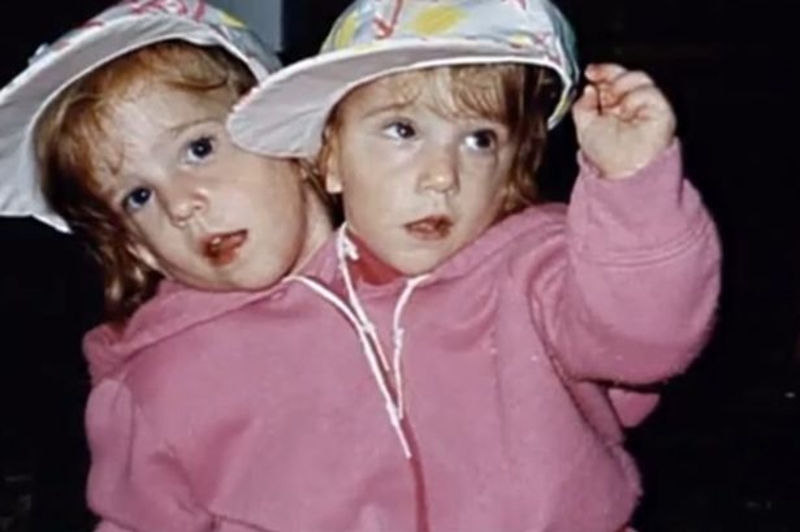
They came across many obstacles and barriers; however, they managed to live and tell us all about it. Their remarkable story serves as an inspiration, as they not only lived but also bravely shared their experiences, offering valuable insights into the extraordinary lives they lead.
They Shared Almost Everything
The heads are not the only individual body parts. They have two sets of lungs, three kidneys, and even two beating hearts; however, they share a complete circulatory system. They have one bladder and share the same reproductive system. One astonishing fact is that they were born with a third arm; however, it was removed when they were toddlers.
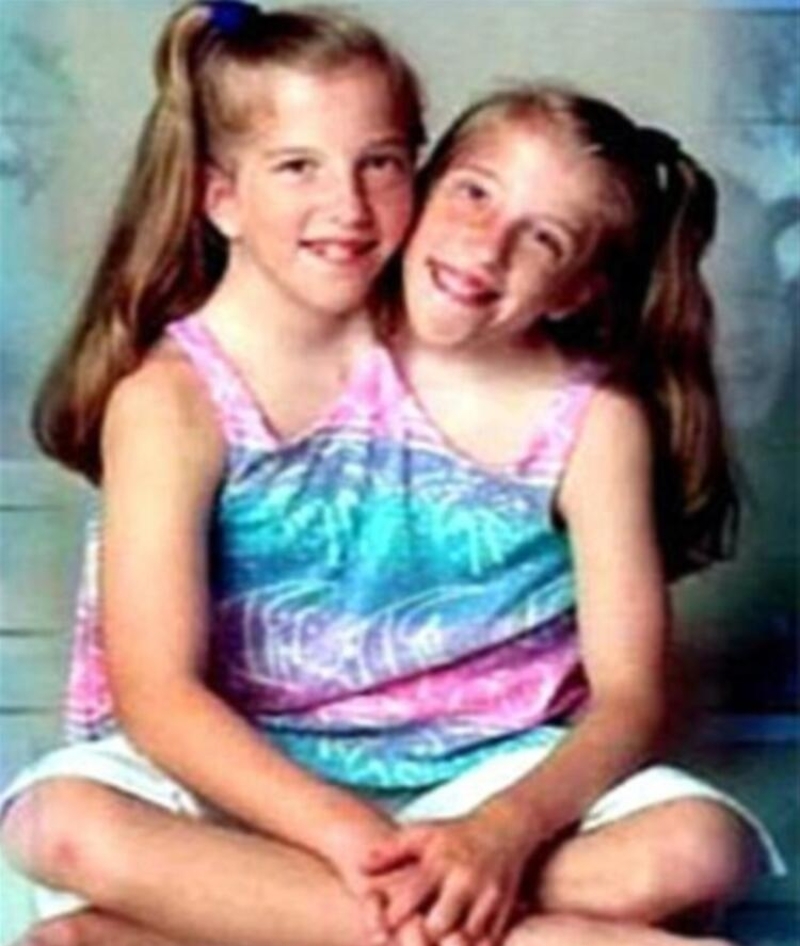
The doctors tried to make life as physically easy as they could. Despite the complexities, the medical team tirelessly strived to make life as physically manageable as possible for the twins, ensuring their well-being and quality of life.
Getting Used to Each Other
Most people (who don't share a body with anyone else) find it difficult to identify or relate to such a condition. What happens when one girl hurts herself? Does the other one feel it too? And what happens when one wants to walk and operate the legs? Well, here are some answers. If one hurts herself, the other doesn't feel a thing. And they can both operate their unjoined organs individually, so each one controls half of the body.

Simple actions that we take for granted require a lot of practice and concentration from joined twins. These insights shed light on the complex adaptations and remarkable coordination required for Abigail and Brittany to navigate their daily lives with a sense of individuality within their shared physicality.
Was It Time to Separate the Two?
So, why didn't Patty and Mike discuss separating the two when they were born? Well, they did. It was discussed several times. However, such a procedure wouldn't be as simple as one might think. The risk was too high. Separating the twins could lead to one of the girls, if not both, ending up disabled or, even worse, not coming through at all after the surgery. This was a risk no one was willing to take.

The magnitude of these risks understandably led Patty and Mike, along with medical experts, to conclude that the benefits of separation did not outweigh the potential harm. Their decision was an agonizing one, driven by a desire to protect their daughters' well-being and preserve their chances for a fulfilling life together.
Going All the Way
When Patty and Mike finally came to terms with their share of life's gifts, they decided they wanted the girls to live as normally as possible. They would not deprive them of anything and will try to socialize them with what is called "normal" kids.

They will also provide whatever the two need, both as one unit and as individuals. Brittany and Abby needed to be loved and supported, and their body was a difficult machine they had to learn how to operate. Even crawling and walking turned into lifetime missions that needed dedication from both sides. The twins, and of course, Patty and Mike.
As Normal as Possible
The girls went to a regular school. They participated as much as they could in sports, and mingled with friends, and from the outside, everything seemed to be just fine. The thing is, it wasn't. Not only was their body abnormal, but the girls also suffered from severe medical conditions. They had health issues chasing them all year round, which made it difficult to lead a stable life.

They were unique on the outside, and they had to cherish how special and distinctive they really were, and amidst the trials they faced, they discovered the importance of embracing their uniqueness, recognizing that they were truly exceptional and deserving of love and acceptance just as they were.
It's TV Time
1996 was when they first presented themselves in the media. They were on the Oprah Show not once but twice. That TV appearance is what made Brittany and Abby famous. This was followed by “The Hensel’s Summer,” a Lifetime Magazine piece that shed light on the two and made their story go public.

Overnight, Brittany and Abby became twin superstars, and through their remarkable story, they managed to reach out to the nation's hearts. Having said that, they faced challenges and obstacles that were far from idyllic, underscoring the complexities of their lives beyond the public spotlight. Not everything was a garden of roses.
It Was a Bit Too Much
Being recognized by almost everyone was, at first, fun and exciting. However, at one point, it became overwhelming and a little too much to handle. It started with people staring at them and then wanting to take photos with them. Things were getting bad. On the one hand, the twins were finally able to say what was on their minds and to share their voices.

On the other hand, most people were not being sensitive to their condition and made the two feel like lepers. This dichotomy left them feeling marginalized and isolated, as though they were being treated as outcasts rather than embraced for their individuality.
Big Abroad
'Joint at Birth' and 'Joint for Life' were some of the documentary shows the family filmed. When they turned 16, they appeared on a UK TV show called "Extraordinary People," which eventually led to the two creating their own TV show, "Abby & Brittany," on TLC.

It aired on August 28th, 2012, and featured eight full-length episodes. The series covered the childhood story, growing up together, social life, graduation, and traveling experiences. Through their television ventures, the twins provided viewers with a unique window into their shared world.
Everything Fell Into Place
Shortly after the show was launched, Abby and Brittany became a symbol of courage. A mark of strength and perseverance, determination and power. After watching them on TV, life suddenly fell into proportions. It made one look at their own personal life through a different colored lens.
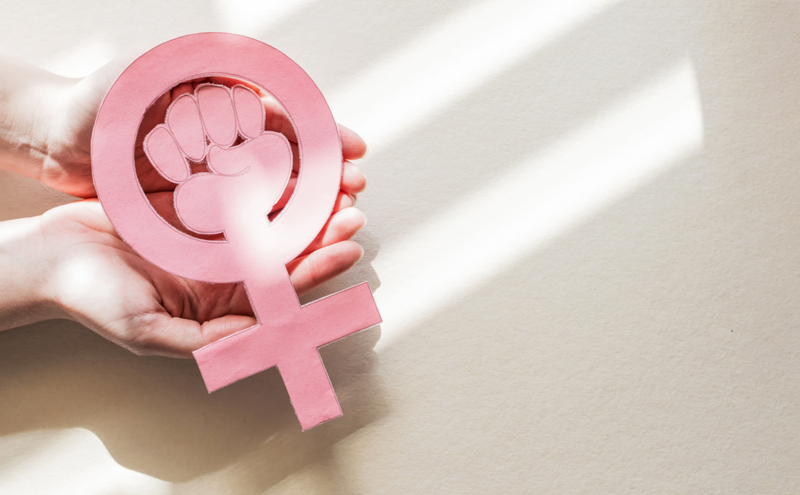
It proved that no matter how big your sack of lemons is if you believe strongly enough and take life's gifts as they are handed out to you, you can make an excellent lemonade. Abby and Brittany were an inspiration. Witnessing their unwavering spirit inspired audiences to reassess their own lives through a different lens, gaining a renewed appreciation for the blessings they possessed.
They Did It All
Name one kid that doesn't take life for granted. Running, climbing, swimming, and walking all seem like easy-to-handle daily activities. However, for the Hensel twins, these simple actions were life milestones they had to achieve and accomplish. For them to walk, they had to be aligned and in perfect unison. For them to swim, their body movements had to be completely synchronized.

Their body muscles weren't developed equally, which made things even more difficult than they already were. All this added an additional layer of complexity, making these physical feats even more challenging. Their perseverance and determination in overcoming these obstacles showcased their remarkable resilience and unwavering spirit.
No Different Than Anyone Else
With all the barriers and obstacles that stood in their way, the twins were not going to let anything stand between them and success. They were determined to do whatever other kids did and were willing to fight hard. Their hard work eventually paid off. It was worth the sweat, pain, and agony because Brittany and Abby rode their bike, ran on their front loan, and swam at the local swimming pool.

When they came of age, they even learned, believe it or not, how to drive a car. These accomplishments were the culmination of their relentless efforts, proving that with resilience and a fierce will, any obstacle can be surmounted.
Driving Together
Operating a vehicle or learning the meaning of every street sign was not an issue for the two. The twins had one set of arms and one set of legs to operate a car with, so they had to be synchronized to perfection in order to hit the road. And they were.

They put all they had into it and managed to pass their driving test, just like any other regular 16-year-old. Just like anything else they touched, it was an immaculate accomplishment, and the pride that radiated from their parents was immeasurable, recognizing the remarkable achievement their daughters had attained in yet another aspect of life.
Who Was in Charge of What?
“I think we're good drivers,” they answered in one interview. They felt confident behind the wheel, and being able to drive made them feel that much closer to regular people. They even detailed who is responsible for what when they are behind the wheel. Abby is in charge of the gas pedal and in control of the brakes.

Brittany takes control of the blinkers, and together they operate the steering wheel. This kind of cooperation is not seen every day. Their synchronized efforts were a testament to their unwavering bond and their ability to navigate life's challenges with grace and determination.
Are You Hungry?
Another thing they have to share is their appetite. They have to decide when and what to eat simultaneously, and this is where compromising meets them the most. One holds the fork, the other holds the knife, and they take turns in biting the food. We suppose when you're born into a situation, not being able to be a solo decider on what to have for dinner is something you learn to live with.

Their shared experiences taught them invaluable lessons about cooperation and finding harmony in even the simplest of daily activities. Through their extraordinary journey, Abigail and Brittany continue to inspire and enlighten the world.
They Even Played the Piano
Brittany and Abby are very talented. Not only did they accomplish basic skills such as running and driving, but they have also nourished their piano-playing passion and have turned out to be amazing musicians. One plays the right-hand side while the other plays the left side.

These two girls are, with no doubt, phenomenal ladies, always stretching their limits. These exceptional young women continually push the boundaries of what is considered possible, inspiring others with their incredible talents and proving that the power of determination knows no bounds.
School Ended
Graduating from high school wasn't enough for the two. They were always straight-A students, and continuing to higher education meant a lot to them. They were ready for a new challenge in life, and college was calling. In 2008 they began studying at Bethnal University and chose to major in education.

The university days were not easy on the two, and the tight schedule was sometimes too much for them to handle. Yet, their unwavering determination and unyielding spirit propelled them forward. Against all odds, they persevered and achieved academic success, once again proving their extraordinary capabilities.
On Their Way to a Diploma
When they first decided to go to university, they initially wanted to major in different fields. Very quickly, they understood that that would increase the pressure they were already under and comprehended that they would have to compromise. As they both dreamt of becoming teachers, majoring in education seemed the natural thing to do.

In 2012, after years of dedication and hard work, Abigail and Brittany proudly walked across the stage, each receiving their own well-deserved diploma, marking a significant milestone in their remarkable journey of achievement and resilience.
They Are Two Different People
Many people mistake the two for being one individual; however, all the two share is a body. They are, in fact, two very different people. They have different tastes and preferences, and their parents made great efforts to help them create two different personalities. One is louder, the other more modest.

One tends to be more uptight, while the other is chilled and relaxed. And although they have to work physically together for most hours of the day, one thing that they can't do is read each other's minds. Their contrasting dispositions create a dynamic that adds depth to their relationship and reinforces their separate identities.
Coexistence
When asked about debates and discussions, they say they never argue. They have managed to specialize in coexistence. It makes their complicated life more bearable. To be honest, Brittany and Abby's love being joined together. They couldn't see it any other way.

The only time they ever wished to be apart was when one of them was grounded. Yes, if one was punished for whatever reason it was, the other had to bear the burden too. In such situations, both twins have to endure the consequences together, highlighting the challenges they face due to their shared body.
On the Catwalk
Another thing Brittany and Abby are not completely aligned with is their dress code. They dress differently and have diverse tastes in clothing. When they were young girls, they found it difficult to deal with and understand each other's needs. However, as they grew, they learned to work that out too. Over time, they learned how to express themselves through accessories and jewelry. Individual shoes, scarves, and hats were their distinctive individual tools.

These personalized touches brought them contentment and a sense of happiness, allowing them to embrace their individuality within the shared physical framework of their bodies. It's a testament to their resilience and determination to celebrate their differences.
Custom Made
Obviously, the girls can't just pick up a top in any shop; they have to have them custom-made. Their tops require special necklines and differently shaped sleeves. The pants they wear are also made especially for them, having each leg in a different color. If they feel like it, they sometimes each wear a different shoe.

While it may have been challenging for them to navigate this aspect initially, they developed a deep mutual understanding and respect for each other's desires over time. They have embraced the importance of honoring their individual wishes while maintaining their remarkable bond.
Could They Go Their Separate Ways?
During their teen years and early twenties, the option of separation was never spoken of until one day, Abby was diagnosed with pneumonia. You see, over the years, if one girl was sick, it meant the other had to be grounded to her bed even though she was perfectly healthy. This time when Abby got sick, Brittany came up with the idea of being separated. It first came as a shock, as it was never previously mentioned.

It was a significant turning point in their lives, raising questions about their identity, independence, and the potential risks and benefits involved. This newfound idea brought forth a whirlwind of emotions and challenges that they had never anticipated.
It Was Together All the Way
Brittany's suggestion broke Abby's heart. She was devastated and could believe her beloved other half felt that way. They had been joined together for so many years, they never knew anything different, so why did she all of a sudden want a change?

Brittany realized how much pain she caused her sister and decided there and then that being separated would never be suggested again and made a promise that they would always be together. Always supporting and loving each other unconditionally. This incident strengthened their resolve to face any challenges as a united front.
They Were Two of a Kind
There are very few recorded incidents of separating conjoined twins when they have already fully grown up and developed. The success rates are low, and there are too many risks involved. Such a procedure is dangerous because the twins share many internal organs, which means that one twin would probably not survive.
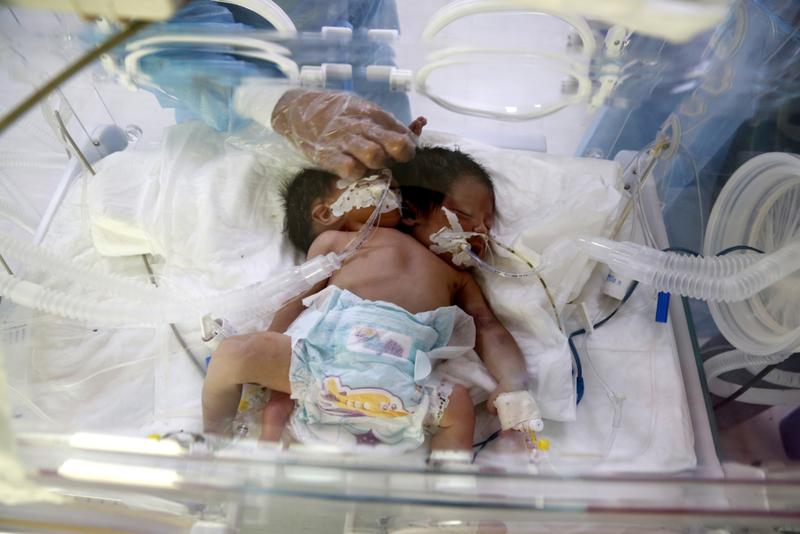
The Hensel twins share many organs turning such a surgery into a very dangerous one. After analyzing their specific condition, it was decided that it was not worth taking the risk. They understood that the challenges they faced were outweighed by the love and bond they shared, reinforcing their choice to remain together.
Lessons of Life
Abby and Brittany have learned how to live together side by side however, they still suffer from many health issues. Not only do they infect one another with diseases, but many of one's actions physically affect the other. For example, if Abby drinks coffee, Brittany's heart, which is the weaker of the two, starts to pound.

It's not always like that, for example, when Abby was sick and found it difficult to take her medicine, Brittany took it for her, however, it didn't work. It's a constant reminder of the intricacies and limitations they face as conjoined twins. Nonetheless, Abby and Brittany remain resilient and continue to navigate their lives with grace and determination, inspiring others with their unwavering spirit.
It Had Dark Sides
Throughout their childhood, Brittany and Abby were bullied quite often. It was inevitable as kids are known to be cruel sometimes. This, however, never prevented them from having friends and socializing, and it never stopped them from doing what they loved. They hosted parties, friends would always come over, and they made an effort to enjoy their adolescent years, as they knew those precious days would never return.

They were only young once. They demonstrated resilience and an unwavering spirit, reminding others that true friendships and joyful moments can be found in even the most unexpected circumstances. Their determination to live life to the fullest is an inspiration to all.
Ticket to Drive
With all the challenges and obstacles, there are also a few advantages to being a joined twin. When the girls travel, for example, they only have to buy one ticket. Yes, they have two heads and two faces, but they only take up one seat. But what happens when they want to go watch a movie? Well, the rules here are different. As the girls have two sets of eyes, they are obliged to buy two tickets.

They are sometimes considered one and sometimes considered to be two, and they just had to learn and live with that. They have developed a deep understanding of the complexities of their condition and have embraced the concept of duality, finding ways to appreciate both the shared and individual aspects of their lives.
Europe Was Next
When Brittany and Abby graduated from university, they were ready to set their next challenge in life. They were planning their European trip together with two friends from college. As expected, they traveled with two passports but sat on one seat. On the last episode of the Abby & Brittany show, their days in London (UK) were documented, capturing all four having the time of their lives.

They traveled through all the famous landmarks and were able to enjoy the kingdom just like any other. The camera captured their laughter, their smiles, and their unbreakable bond as they navigated the city, creating memories that would last a lifetime. Their journey showcased the indomitable spirit of Abby and Brittany, proving that nothing can hold them back from living life to the fullest.
London Calling
Traveling to Europe was on the twins' wish list, and with the help of their friends, they managed to make their dream come true. Yes, the British stared at them, but who doesn't? London conquered them, and it was more than they could ever expect. Traveling across the ocean was a big deal for them as they were away from their parents and away from their familiar surroundings.

Yet again, they proved how awesome they were, and that there was nothing they couldn't achieve, the trip allowed them to break free from societal expectations and embrace their individuality more than ever before. They learned to navigate unfamiliar streets, communicate with locals, and immerse themselves in diverse traditions, however, while they were traveling, something changed.
Next Step in Life
Brittany and Abby came back from London with a new realization. They were ready to open a new chapter in life and live their life completely different than what it was before. They were in their twenties and ready to move out of their parent's house and get a place of their own. It's not easy moving out of your parent's home, especially if you're a conjoined twin. However, Brittany and Abby were determined, and nothing was going to stop them.

They began exploring various living arrangements that could accommodate their needs and provide the space and freedom they longed for. It required careful planning, consideration, and creative solutions, but they were committed to finding a place of their own.
Round-the-Clock Care
It was a significant milestone in their life and it meant they would live alone without the 24 hours day seven days week care they were used to. At first, it seemed impossible, but the days went by and everyone came to terms with the fact that no one could watch over them forever. The twins moved into their own apartment. The girls knew they had each other and that neither of them was really alone. All it took was believing in themselves, and that made anything possible.

They faced the challenges head-on, learning to navigate household chores, cooking, and managing their daily routines with a newfound sense of independence. Together, they embraced this new chapter with courage and resilience, knowing that they could conquer anything as long as they had each other.
Teacher Teacher
When it was time for the two to find a job, there was no question that they would nail it. They became 5th-grade teachers at Mounds View Public School and are an inspiration to all. Both students and staff. Don't think that they weren't concerned about how the children would react to this phenomenon, and in order to prevent discomfort on any side, they held a forum allowing anyone to ask whatever crossed their mind. It was like a breath of fresh air.

The students quickly realized that their teachers were just like any other educators, passionate about teaching and dedicated to their students' success. Brittany and Abby's positive influence and resilience continue to inspire and empower those around them, creating a nurturing and inclusive learning environment for all.
Everyone Was Happy
Everyone is happy. The students are satisfied, the student's parents are thrilled with the twins' teaching approach, and the school's principals are pleased with what they have accomplished. The twins are content, too, however, there is one issue.

Although Brittany and Abby are two individuals, they are considered as being one teacher. Therefore they only get paid one salary. The girls are not particularly concerned bout this and are overall happy to fulfill their purpose in life. For them, the joy of teaching and the satisfaction of seeing their students thrive are rewards that cannot be measured in dollars and cents.
Side by Side
Brittany and Abby will forever be dependent on one another. Reality has forced itself on them, however, they have learned to compromise and accept. For the Hensel twins, it's all about coming halfway and assuring the other half is happy. The twins' parents, Patty and Mike, have forever been their greatest believers. Over the years, they have encouraged them, set an example, and cherished their individual personalities.

They have always loved them unconditionally. With their parents' constant presence and unwavering belief in them, Brittany and Abby continue to thrive and inspire others with their extraordinary journey.
Would They Ever Be Whole?
The question of marriage has crossed their minds over the years. Deep inside, they both long for a partner and to have their own family, and they both believe that one day they will meet some (two) guys who will love them just the way they are. They envision a future where they can share their lives, dreams, and aspirations with supportive partners who appreciate their strength, resilience, and individuality.

The idea may seem odd and unrealistic, however, these two have accomplished every single goal they have set, so why would this be any different? Brittany and Abby's unwavering belief in their ability to overcome barriers extends to matters of the heart, and they continue to embrace the possibility of finding love and creating their own happily ever after.
A Bright Future
What does the future hold for Brittany and Abby? No one can say. They are aware that their medical condition will probably worsen over the years, and it's presumed that their life will be shorter than average. Having said that, neither have any intention of giving up, and even until this day, they are enjoying life to its extent. Taking the best out of what life has to offer, despite their condition, is something we all can learn from them.

Brittany and Abby are full of life, which we can only envy, and they are full of joy and happiness and are an inspiration to us all. They have vibrant spirits and unwavering optimism, inspire others to appreciate the present, cherish relationships, and make the most of every opportunity. They serve as an enduring source of inspiration and a testament to the indomitable human spirit.
Our bodies are made up of approximately seven octillion atoms. That's a seven followed by twenty-seven zeros. All those atoms can build and get arranged according to our DNA in a whole lot of different ways, or other things can affect them. This list has plenty of weird and uncommon things that can naturally happen to our bodies.
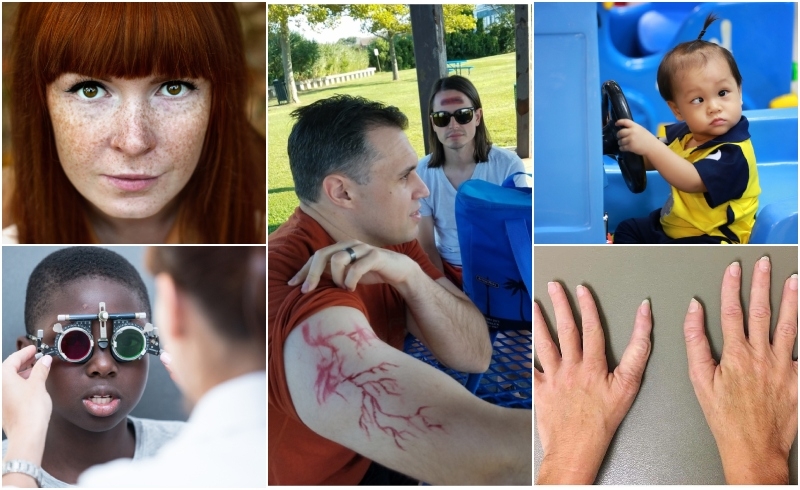
You might have a couple of these, you might have heard of them, or they might be so rare that only a single recorded person has ever displayed the trait. Nonetheless, read on and find out how amazing, strange, and intriguing our bodies can be.
Eyes in Different Colors
If you like reading fanfiction, there's a pretty good chance you've heard of this one. Having two different eyes is known as heterochromia (literally, “different colors”), and it's an effect of something called Chimerism when two developing zygotes fuse together in the womb.

This is actually quite a bit more common than you might think, but twins or siblings don't often have different colored eyes due to how regressive genes work. It's complicated. Chimerism and heterochromia are harmless. There are plenty of famous people who have this trait, such as Mila Kunis, Benedict Cumberbatch, and Olivia Wilde, though the results may vary.
Golden Blood. But Not Actually
The rarest blood type in the world is called Rhnull, or “Golden Blood.” It's so rare because it has no antigens, meaning that literally, everyone in the world can receive it from those who have it. Antigens protect against diseases, which is great for people who need blood transfusions since the blood will never react poorly to them.

On the other hand, the forty people in the world who produce this blood naturally don't have a great time since their immune system doesn't do that well. Most blood types have A, B, O, or AB antigens, but this type has none of them. The supply is incredibly useful and highly sought after, but only nine people of the forty regularly give blood.
Long Palm Muscles
Known in the scientific community as palmaris longus, this is a muscle that is useful for climbing trees. It's not something that most of us need that much anymore, but there's a relatively good chance you have it. To see if you have it, place your arm on a flat surface like a desk and touch your thumb to your pinky finger.

If you have a long palm, the muscle and tendon will pop out of your wrist. I definitely have it, which isn't a surprise. I have some dang long hands. If you do have them, go do some climbing and use what nature gave you.
A Gene That Means You Need Less Sleep
There are a few famous people in history who benefit from this gene. The DEC2 gene basically shortens a person's sleep cycle, so they feel just as rested on less sleep. Illustrious figures like Winston Churchill, Nikola Tesla, and Margaret Thatcher have all used this gene to get tons of work done while other people needed their sleep.

Of course, those people might not have called it a blessing, no matter how nice it sounds to us. Instead of the normal eight hours, we all SHOULD be getting, these people got by with between four and six hours. Despite the number of figures who have profited from it, this is a pretty rare mutation.
The Gene That Gives You Unbreakable Bones
Okay, they aren't unbreakable, but they're much denser than normal, and that counts for something. A mutation in the LRP5 gene not only bakes your bones with power and makes them hard to break, but it makes your skin less prone to aging. Sounds like a pretty good combo.

On the other hand, people with this condition tend to have issues with joint replacements if they haven't been watching their weight. Imagine trying to do surgery on Superman's bones. Even if it's something he needs, you'll be going to have to put a lot of effort into it.
An Extra Hole in Your Head
Having a little hole near your ear is called a preauricular sinus and is discovered during a newborn's first examination. These small pits develop due to developmental defects of the first and second pharyngeal arches, or, you know, the ear bits. They can occur on one side or on both, but for the most part, they're harmless. As long as you don't use them for earrings. We really don't recommend that.
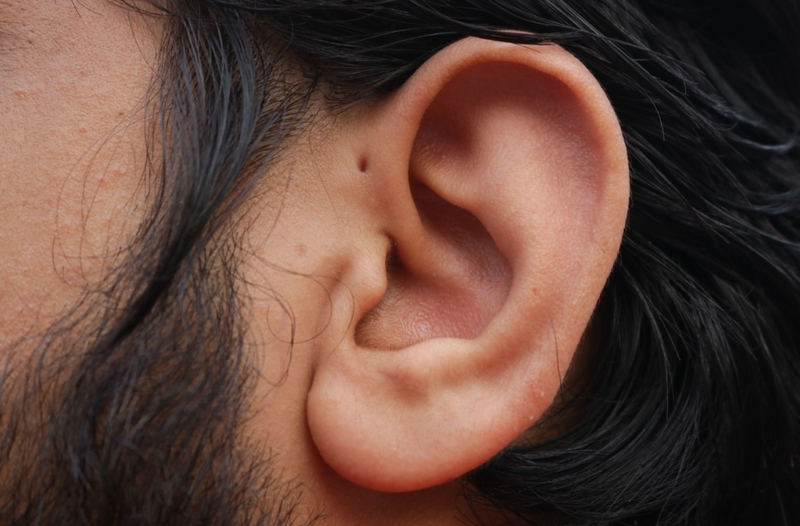
However, these kinds of ear malformations can sometimes be associated with renal anomalies. Even if they do become a problem, getting them dealt with is usually no big issue.
An Extra Neck Rib
More prevalent in women, having an extra rib near the cervical spinal region (or “neck” for us dum-dums) is known as a cervical rib. Somewhere between one and three percent of the people in the world have a cervical rib on one side or both. They may reach down to connect to the first rib, or they may not be fully formed.

Often the bone is tiny and hard to notice even on X-rays, but they can sometimes cause complications. A cervical rib means higher chances of nerve or blood vessel compression between the rib or its muscles since the ligamentous connections take up a smaller space.
Less Means More for the Heart
All of us have the PCSK9 gene in us, but some of us have it in a lesser amount, somehow. Maybe it's just a weaker version? It's hard to have less of a gene – you either have it or you don't. Those that lack it, or present the deficiency somehow, have a ninety percent less chance of heart disease, and hardly have to bother with cholesterol at all.
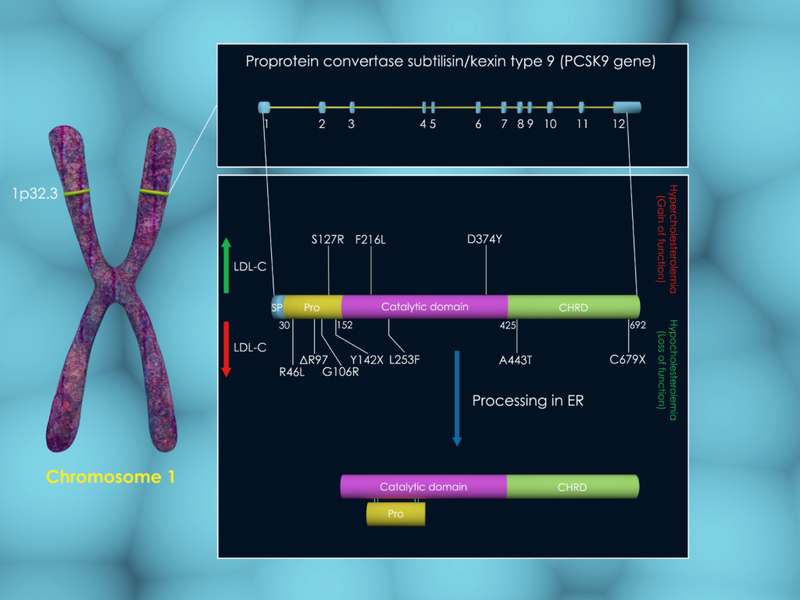
The gene provides instructions on how to make a protein that regulates the amount of cholesterol in your bloodstream. You might know there are two forms of cholesterol, good and bad, but even bad cholesterol has some uses.
See More Colors
Humans, for the most part, are trichromats. That means that we have three kinds of cone cells in our eyes to interpret and identify colors. There are those, however, that have four kinds of cone cells in their eyes, known as tetrachromacy. They can't see colors that don't exist, but they can perceive the differences in colors much closer.

Is that couch dark brown or black? We don't know, but tetrachromats will be able to tell us. It was the normal condition of most mammals in the past, but they have lost one or two of their cones by now.
Get Those Elizabeth Taylor Eyes
Having long, beautiful lashes is something that everyone wants if they want to look their best. What about a double layer of eyelashes? This is called distichiasis, and it does just that. There's a technical way to describe this, but it makes your upper lashes thick, full, and popping.

Actress Elizabeth Taylor, known as one of the most beautiful women in the world, sported this to make things, frankly, a little unfair. This is a good boost but can create a sensitivity to light, irritation, sites, and droopy eyelids. It is still a rare trait.
The Rare Genetic Condition Known as...Red Hair
This one is pretty well known. In fact, we wouldn't be surprised if someone in your family has it. But natural red hair is a lot rarer than you might think. It only occurs in about two percent of the population, most common in northern and western Europe. It's a recessive gene, beaten by every other color.

For someone to have natural red hair, both parents have to have it. You may wonder why they seem far more common, but it turns out something like thirty percent of advertisements feature models with red hair. Plus, there's hair dye and plenty take the opportunity to try out this fiery shade.
What Is the Rarest Eye Color?
The least-common natural eye color, according to researchers, is gray. Less than one percent of the population feature this striking eye color. It's due to a low level of melanin in the front layer of the iris. The most likely place to find this feature is Eastern and Northern Europe, which also has higher numbers of green eyes.

The only other two shades that are rarer than gray are red or violet, and that's more because of conditions such as albinism, and not what many would term “natural” eye colors. As far as straight genetics go, gray eyes are the rarest, and quite lovely while we're at it.
Ocular Albinism Does More Than Reduce Pigmentation
Did you know there are actually two types of albinism? The first is oculocutaneous albinism (OCA) – this is the version we're all more familiar with. The other is ocular albinism. OCA is already rare, but ocular albinism is even rarer. It's estimated that somewhere between 1 in 20,000 or 1 in 50,000 people have it. Ocular albinism primarily affects the eyes, creating very light irises.
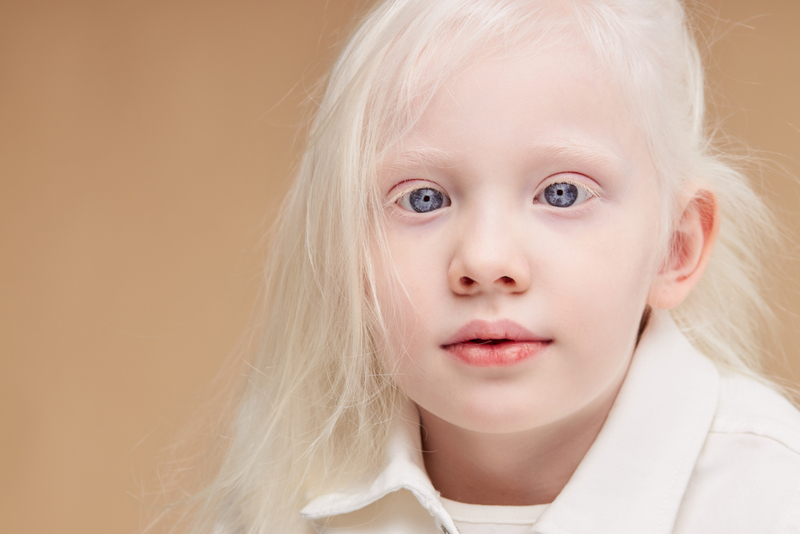
However, it also causes reduced vision strength, increased sensitivity to light, and other more serious eye conditions. Ocular albinism also affects the pigment of the skin, but it's reduced compared to the more common, relatively, OCA.
Are You a Super Taster?
Genetics can even play a role in your taste buds. About twenty-five percent of the people in the world can be categorized as “supertasters.” These people have more visible taste papillae, which are tiny dots on the tongue. It makes them far more sensitive to certain foods, usually bitter, sweet, and salty flavors. They also tend to really dislike spicy food, for obvious reasons.

They also tend to stay away from smoking and alcohol. They dislike vegetables since they often have a bitter taste. Despite that, supertasters, especially women, tend to have superior cardiovascular profiles, according to one study. There are lots of possible reasons for this.
Outie Belly Buttons are Becoming Less Popular
Most of us have an innie belly button, but if you're among the lucky four percent of the world, you might just have an outie. A couple of things determine whether you have an innie or outie. The first is the genetic development of the belly button itself, but it also has to do with the order your body puts on fat.

Different people develop fat in different places, down to specific cells. However, with the popularity of low-rise jeans and midriff tops, belly button plastic surgery is becoming more and more common. Still, the genetics are there, which means that trait will continue to endure.
Can't be Wise Without Them
Once upon a time, we all needed wisdom teeth to grind up tough plants and meat material. When that third row of molars tries to break through the gums, they often don't have enough space, which creates crowding, pain, and jaw issues. We're sure that plenty of the people reading have had a procedure to get them removed.

There are some people that don't have wisdom teeth at all. An estimated thirty-five percent of humans lack these teeth for some strange reason. It's genetics, but right now we can only guess why more than a third of humans don't have these teeth at all. Evolution perhaps?
Stretch Out Those Eyeballs
If you're looking for a wild party trick, check to see if you have something called globe luxation. It's an extremely rare condition that allows your eyes to actually protrude a little from their sockets.

With practice and some experimentation, you should be able to pop your eyes out of their sockets a little bit. Great for grossing out nephews. This condition comes with downsides such as optic neuropathy, thyroid eye disease, and things like shallow orbit and floppy eyelid syndrome. They don't sound like they're any fun.
Sing Like the Best of Them
Learning you have perfect pitch doesn't just mean you're a good singer – it means you can mimic musical notes perfectly. Think about hearing a D minor and naming it on the spot without hesitation. Plenty of people are said to have it, but only about one in ten thousand really possess the trait.

For the others, it's probably a combination of training and luck. Scientists are still in discussion as to whether this is a learned trait or something that is present from birth. Some have thought that with enough training, a true perfect pitch can be developed, but it takes a lifetime of work at the very least.
Survive at High Altitudes
Climbing to high altitudes makes it harder and harder to breathe. There are even heights that, should you not have the proper gear, your body will not make it. It's generally at twenty-six thousand feet or about five miles. Certain groups, however, are able to survive at high altitudes much better.

Indigenous groups like Tibetans have had generations of adaptation to increase their red blood cell levels and other things, which allows them to survive and even flourish at high altitudes. Going from sea level to higher places, like Colorado, for instance, is considered a change, but here we are referring to extremer heights.
The Fish People of Southeast Asia
Unless we've been trying to increase our skills, most of us start panicking after about thirty seconds underwater. Not so for the people of the Bajau, a group of sea nomads from Southeast Asia. A study found that the Bajau, who commonly take dips in the ocean to fish, have evolved extra-large spleens that hold oxygen-rich blood cells in reserve.

Because of this, they're able to spend from five to ten minutes underwater without worry. A big spleen is going to help, but training yourself to spend longer and longer periods beneath the waves is going to help, too.
Never Get Lost
Some of us need directions to go to our mom's house, but there are some who seem to have a natural ability to keep going in the right direction. History has shown us skilled explorers that have, whether genetically or through learned traits, guided people without going astray.

Researchers at the Queensland Brain Institute discovered that this useful ability is mainly attained training in the environment you're in, and comes about slowly as your mind becomes more and more attuned to the small elements around you. Moving to a new area will, for the most part, reduce this ability.
See in the Dark with Sound
No doubt you're aware of the ability dolphins and bats have called echolocation, which allows them to “see” using bouncing sound waves. It turns out a few rare humans also possess this ability. A blind man named Daniel Kish uses flash sonar to ride bikes, hike through wildernesses, and more.

This is less a genetic trait and more something you have to learn how to do, and even then we can't guarantee that anyone can do it. Still, if an unfortunate accident has left you sightless, you might as well try and develop this skill.
Neither Right nor Left
You probably know that ninety percent of people have a dominant right hand, at least according to the American Psychological Association. Almost all the remaining ten percent are left-handed, but there is a third category. Ambidextrous people make up, at most, one percent of people. While being able to do things with either hand can come in HANDY, there are some disadvantages as well.

For some reason, ambidextrous kids have a hard time with verbal skills, math, and reading. Also, since the handedness has something to do with the hemispheres of your brain, those who are down the middle will have greater declines in brain volume.
The Long Toe
Depending on where you live, having a second toe that is longer than your big toe might not be rare at all. It could be the norm, or statistically equal. However, one of those famous people you hear about (Meghan somebody, we think) revealed she has long second toes, which got everybody aflutter. It's known as “Morton's Toe,” and it's really just a small change in where the bones of your toes are attached.

It's also called the “Greek Toe,” with sixty-two percent of Greek men and thirty-two percent of women showing the long toe. Want to know who else exhibits this trait? None other than Lady Liberty herself in New York Harbor.
A Shock of White Hair
“Piebaldism” is a lack of melanocytes in certain areas, most commonly seen in hair follicles. It manifests as a stripe of an area of white hair, though sometimes eyebrows or even eyelashes are affected as well.
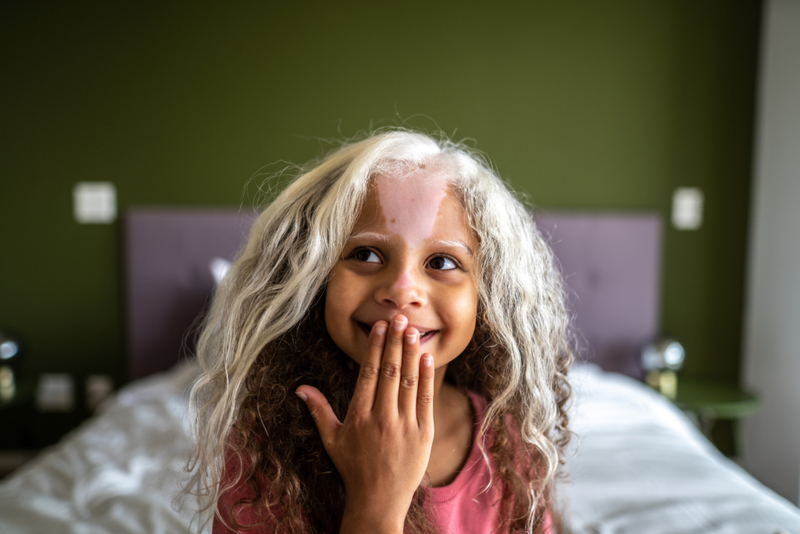
This presents at birth and continues for the rest of the person's life, and it's totally harmless – except for the affected areas being more susceptible to sunburns and skin conditions. Now that we think about it, that's a pretty harmful feature. Some people may feel self-conscious, but hair dye, skin grafts, and other things are available to reduce the effects should it be the kind of thing unwanted.
When Senses Get Mixed Around
There's a good chance you've heard of synesthesia, but this effect only occurs in about three to five percent of the population. People smell colors, they taste music, they feel smells, and all other manners of mixed-up signals in the sense regions of the brain.

It isn't a mental condition – in fact, many people who have it consider it a gift. The most common version of this sensation is “grapheme-color synesthesia” which has letters or numbers become associated with colors. One hallmark of the trait is if you have it, it always manifests the same way. If the letter D is red, it will always be red.
Face Blindness Sounds Like a Horror Story
Remembering faces seems like the kind of thing that everybody can do, but some poor souls suffer from face blindness. It leaves them unable to recognize familiar people. That includes close friends, family members, and even themselves in mirrors. The term for it is prosopagnosia, and it could result from a brain condition or a stroke. Some people are also born with it.

It's a mutation or alteration that affects the part of the brain that coordinates memory and facial perception. This is thought to occur in some way in up to two and a half percent of people, though the most intense versions of the condition are far rarer.
It's Like if Superman Could Only Do Faces
“Super-recognizers” have an almost superhuman ability to remember and identify faces they've seen before. This condition was only first identified in 2009. The power of this condition is so strong it could be remembering that you saw someone at a concert or big gathering years and years ago, even if it was just for a moment.

People with this skill are highly-sought by law enforcement and private security for just this reason. There are actually tests you can take online to see if you have this ability.
The Great Cilantro Debate
For those who like cilantro, it's a great addition to salads, guacamole, and more. For those that don't like it, it's vile – like eating soap. This division is caused by a specific gene that controls the sensing of odors that come from chemicals found in the plant. The gene sometimes doesn't play fair, with fathers and sons differing on their enjoyment of the herb.

If you can't stand the leaves of the coriander plant, one of the things you can do is crush the leaves up before eating or cooking with them, which helps to break down the chemical at the source of the bitter flavor.
One in Five Hundred
One out of every five hundred babies is born with something called polydactyly – an extra finger or toe. Sometimes it comes with no other anomalies, sometimes it comes with other issues. The extra digits can be removed surgically, but an extra finger can sometimes be a benefit. It's a boon to manual dexterity if the studies are to be believed.

Those with six fingers could even accomplish with one hand what others do with two. They have their own muscles, tendons, and nerves. Plus, you could be the pianist from Gattaca if you train hard enough.
No Surprise Parties for These People
Have you ever heard “Jumping Frenchmen of Maine?” It's a rare disorder for someone who has an uncontrollable reaction to being startled. A person with this condition might scream, flail their arms, jump or start a fight. Even stranger effects are repeating words, mimicking movements, or mechanically following simple commands. The symptoms begin at puberty, but slowly reduce as age progresses.

The name comes from French Canadian lumberjacks working in Maine, but the behavior has been seen in Louisiana, Malaysia, Siberia, India, and elsewhere. Researchers are unsure if it's genetic, environmental, cultural, or what. Be careful around such people, or little jokes will become much worse.
The Worst Bad Hair Days Ever
We've all struggled with hair that doesn't want to play nice, but have any of us ever had “uncombable hair syndrome?” It's the result of genetic mutations affecting the proteins that form the hair shafts on the head. Nowhere else on the body, thankfully. The development of the hair makes it impossible to be combed flat.

Those who are blond or straw-haired are more likely to have this than other shades, and it tends to stick out from the scalp in random directions. Luckily, there are no other health problems it and does tend to calm down with age.
Two People in One Body
A chimera is a mythical beast that is a combination of several different animals – lions, birds, dragons, snakes. They differ based on the area they're from. Chimerism is also present in humans, though it's a little different. It happens when a person has two sets of genomes, from when a twin is partially absorbed by the other twin in the womb.

It manifests in a variety of different ways, such as heterochromia, but true chimerism is quite rare, with only a hundred people in the world exhibiting it. Researchers believe there may be many more, but it can be difficult to determine.
Super Strong Children
For most of us, getting big and strong requires working out the right way, eating the right food, and a bunch of other things. Sleep is a big one. For people who have inactive myostatin genes, however, it requires nothing at all. Well documented in mice and cattle, children who have this mutation are born swole, possessing bigger muscles and greater strength.

There hasn't been a great deal of research done on the condition, but so far there are no long-term health issues associated with it. People with this condition also tend to have reduced body fat, though increased muscular strength isn't always part of the deal.
The Stinkiest Mutation
We can all get a stink about ourselves when we're working hard or spending time in the heat. A small number of people, however, are doomed to emit a constant, unpleasant smell. There's an enzyme in the body responsible for breaking down the chemical trimethylaminuria, which comes from digesting eggs, beans, and fish – some really stinky foods.

A mutated FMO3 gene prevents the enzyme from being produced which results in someone suffering from a strong, noticeable body odor that people have called similar to rotting fish. It's a rare occurrence, happening in less than one percent of the population. Thankfully.
Want More Hair? You Got It
For most people, having hair on their heads, chins, chests, and maybe legs is good enough. For people with Ambras syndrome, they're going to have much more. It can potentially cause hair all over their bodies, but each person usually has it isolated to certain places. It can, however, cover them from head to toe, which is known as hypertrichosis, or “werewolf syndrome.”

The syndrome is quite rare – it has affected only about fifty people since the Middle Ages. The responsible gene behind this one is TRPS1, a mutation that disrupts messages sent to cells developing follicles.
Gut Fermentation Syndrome
None of us like to be hungover, even if it was for a good reason. But people who have Auto-brewery syndrome, otherwise known as gut fermentation syndrome, will always be hungover. Sometimes it takes a little bit of alcohol, sometimes it takes none at all.

The syndrome occurs when your gut produces an excess of saccharomyces cerevisiae, which is a form of yeast. The yeast then sits in the GI tract, which will ferment things and produce ethanol, a form of alcohol. As you might expect, this leads to the absorption of that alcohol, and constantly being drunk or hungover.
Kinda Like Something out of a Lovecraft Story
Ectrodactyly is famously known as “lobster claw hand” or “split hand malformation,” and we bet you can figure out why. Individuals with this disorder have a cleft where their middle toes or fingers should be, meaning they'll only have the outermost toes or fingers, though there is some variance in how it manifests.

There are a number of ways for this disorder to appear, though it's always through some change in chromosome seven. While the disorder will likely affect people their entire lives unless they undergo many surgeries, there are some people who have not only prospered but become famous, such as chess players, actresses, and athletes.
More Limbs Than Normal
For a really high percentage of people, the number of limbs is four. Two arms, two legs. That's pretty much how it goes with mammals. Polymelia, however, bucks the trend and can add more. It's a birth defect that is said to be the result of an improperly-absorbed twin.
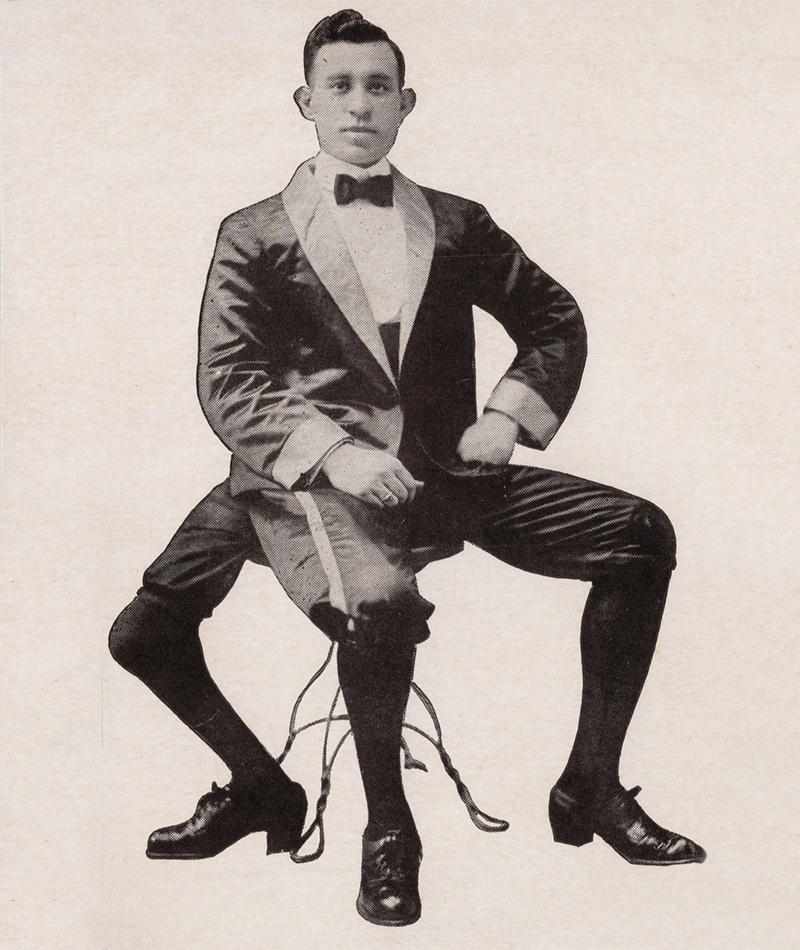
It's often found in animals, and conjoined twins are a form of this defect, which results from an absorption that is even less complete. The additional limbs are often shrunken, deformed, and unable to be of use. It's also possible that one or more genes have gone through a mutation, resulting in an additional limb.
It's Not a Disability
Due to an extremely rare development in the womb, Wang Fang, born in China, has feet that are turned a hundred and eighty degrees on her ankles. However, she refuses to call it a disability. She can run just as fast as her friends and hold a regular job as a waitress.
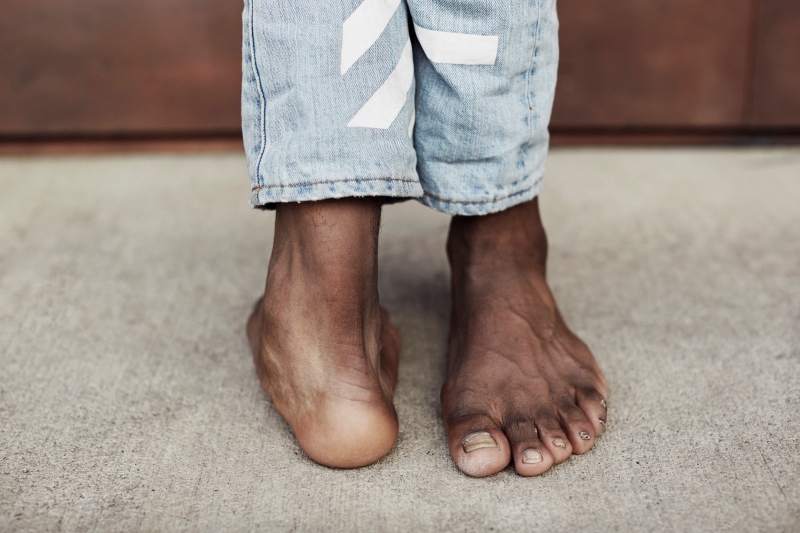
Other than putting her shoes on backward, there's really nothing wrong with her. It was feared she wouldn't be able to walk properly when she was born, but it turns out she doesn't have any other side effects, which must be a one-in-a-trillion chance.
Walking on All Fours
It's possible that only one family in the entire world suffers from this peculiar disorder. Uner Tan syndrome is named after the evolutionary biologist who first studied it, finding it in a single-family in rural Turkey.

The condition is, even by neurological conditions, quite strange. Individuals who suffer from it walk like quadrupeds – on all fours. They also use primitive speech and have a congenital brain impairment, which includes something called “disturbed conscious experience.” Tan believes that the condition is due to some sort of backward stage of human evolution, but other experts aren't convinced that genetics has everything to do with it.
Hey, No Clipping Needed
Anonychia congenita is a rare disorder that takes place during formation, in which a person's toes or fingers don't develop nails at the end. It's such a small change, but just imagine having toes or fingers that don't have nails. You'll feel so strange.
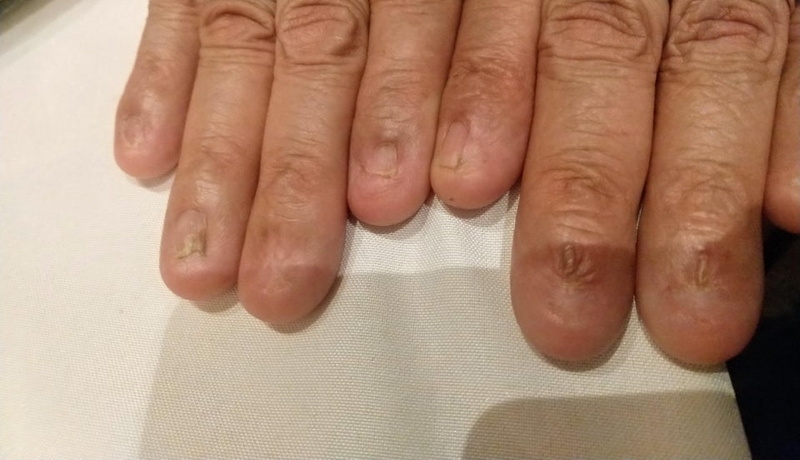
It doesn't seem too bad all things considered, and as far as we can tell it doesn't come with any other effects. It could be due to a number of things, including infection, trauma, skin diseases, and even plain old genetics. Not only can people have no nail, but they can also have just part of a nail.
Elf? Vulcan? You Decide
Stahl's Ear is known by a number of other names. It's been called Satiro's ear, Vulcan or Spock ear, and elf ear. It's a development of an extra cartilage fold in the ear, which gives it a natural pointed shape.

Thankfully, the extra fold and different shape haven't presented any other changes – not even with hearing. However, many parents still chose to have the ear reshaped in order to, perhaps, reduce possible future teasing. This can be done with a simple mold if it presents young enough, or an outpatient procedure if the child is older. If they don't get it corrected, the kid will save tons on costume supplies.
An Eyeball Scar
A corneal scar happens when the cornea of your eye, typically transparent and clear, has an opacity or irregularity that blocks light. Not all scars affect vision, but many of them can mean a significant loss of vision.
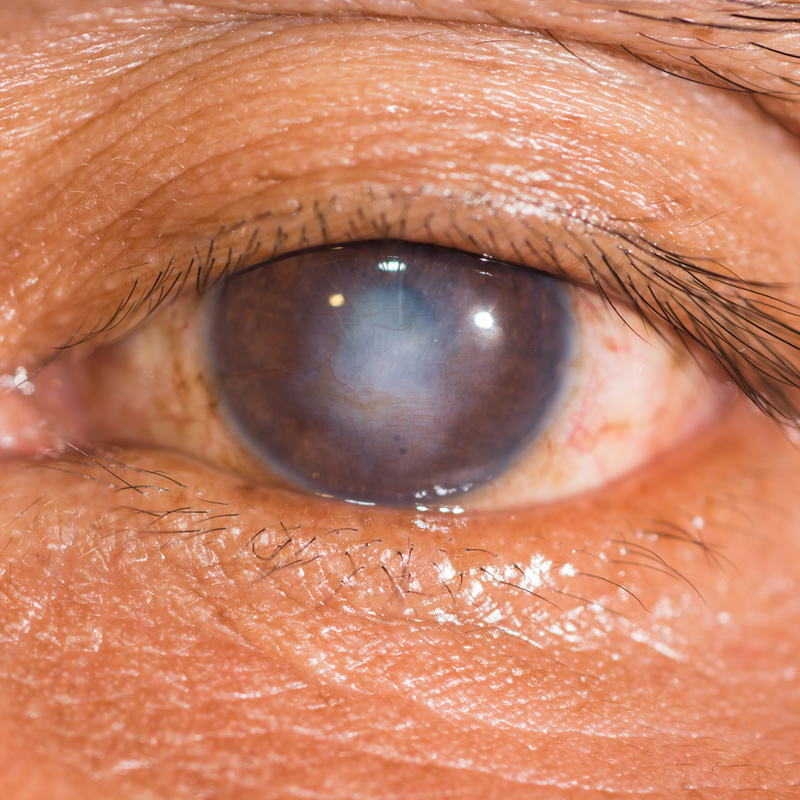
These scars can develop because of injury or trauma, infections, or eye diseases, and have numerous effects like pain, swelling, and the constant feeling that something is in your eye. Which sounds like torture. Corneal scars may not change over time, or they may worsen due to an underlying disease. Milder scars may only require glasses to correct the vision, but more serious scars have a number of treatments available to mitigate or remove the damage.
They Get a Slight Advantage While Swimming
This is one of the more common traits on this list – it's likely someone you know has this feature, as it develops in one in two thousand live births. Webbed toes present most commonly as a connection between the second and third toes, with skin that extends higher. It can sometimes reach all the way to the end.
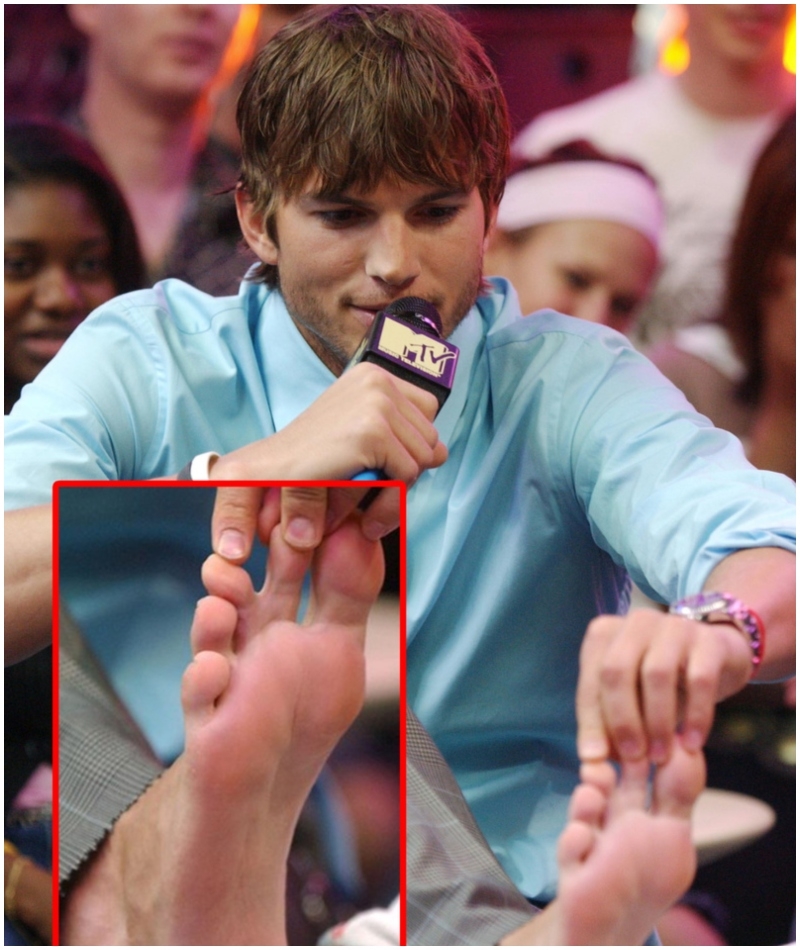
The specific cause of this condition is still a mystery. There is clearly some genetic component, as close family members can share the trait, but there are a number of possible reasons. If you have this condition, don't feel bad – Ashton Kutcher also has it.
Being Born Without a Bridge in the Nose
We all know that the bridge of the nose is the bony area, actually cartilage, that gives our nose shape. Some people have a low bridge, but others are bone without that cartilage at all. This is actually relatively common for people of Asian or African descent – or at least less rare.

The condition typically doesn't impair breathing, though a small amount of plastic surgery may be recommended to ensure proper airflow. Other than genetics, this can be due to genetic disorders, birth defects, or even infectious diseases.
Hey, Pull My Finger
Trigger finger is a little different than what you might think it is. It's a condition that occurs when one of your fingers is stuck in a bent or straightened position, known as stenosing tenosynovitis. It happens when inflammation shrinks the space within the sheath that wraps around the tendon in the affected finger.

The condition can happen often with people whose work or hobbies require repetitive gripping motions. It's also more likely to occur in women, and in people with diabetes. The treatment of this condition varies depending on the severity, ranging from inflammation-reduction to surgery.
A Singular Palmar Crease
Known as a simian crease (because it looks like a monkey might have it, we guess?), having one long crease across your palm is the result of the fusion of the two main palmar creases — the heart line and the head line. It's often found in people with a few abnormal medical conditions, but otherwise, perfectly healthy people can also develop it.
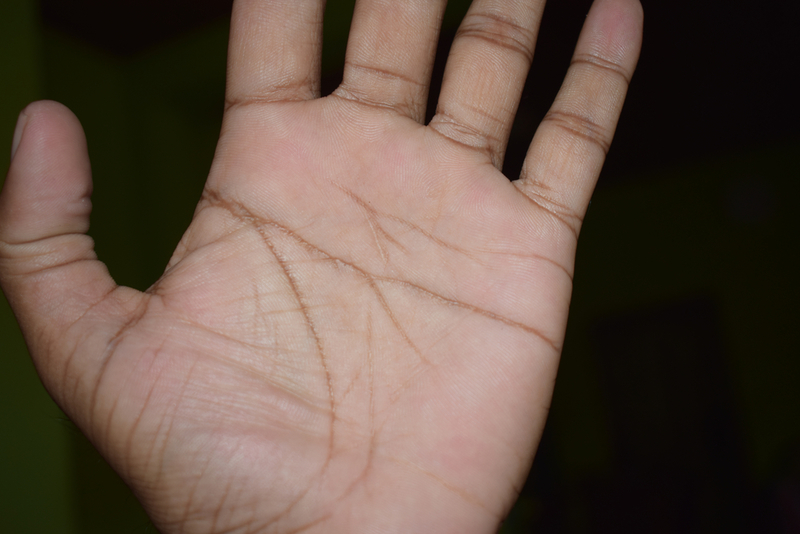
About 1.5% of the population has it in at least one hand. It's now known in the scientific community as the single transverse palmar crease. The most likely cause of this is fetal hand movement since the crease develops during the second month of pregnancy.
You've Heard of Being Left-Handed
How about being right-hearted? This rare condition forms the heart on the right side of the chest, and it's called dextrocardia. There are a few versions of the condition. The first is dextrocardia of embryonic arrest, which moves the heart further right than normal, and is associated with many heart defects.

Then there is dextrocardia situs solitus, with the heart on the right side of the chest but everything else is normal. Dextrocardia situs inversus has the heart being mirrored on the right side. There are more still. Surprisingly, most of these versions of the disorder don't present a big list of problems. About one in every twelve-thousand people develop this condition.
This Little Spider Went to Market
Fittingly called “spider fingers,” arachnodactyly is a condition that makes fingers and toes abnormally long and slender in comparison to the rest of the hand and foot. People with this disorder also have thumbs that are pulled inwards toward the palm.

People with this condition usually have no other health conditions, but it can sometimes become linked to Marfan syndrome, Ehlers-Danlos syndromes, and more. It's possible that famous Russian composer and pianist Sergei Rachmaninoff had this condition or Marfan's syndrome. The condition has been linked to mutations in both the fibrillin-1 and fibrillin-2 genes.
It Kind of Looks Like a Map
A port-wine stain, as long as it isn't an unfortunate end to a party, is also discoloration of the skin caused by a vascular anomaly, named because it's similar to the color of Port wine. A port-wine stain most commonly appears on the face but could appear anywhere on the skin, with the neck, upper trunk, arms, and legs also being common.

They start out pink, but will often darken into red or purplish colors. While usually harmless, they can be removed to reduce potential problems or bullying. The last leader of the Soviet Union, Mikhail Gorbachev, had a prominent port-wine stain on his forehead.
Hair That Spins Both Ways
All of us have a whorl in our hair that helps determine how the follicles lie, which side is better to part on, etc. About seventy-five percent of people have clockwise whorls, while eleven percent have a counter-clockwise pattern. For the rest, there are increasingly rare options, including the double whorl, which is present in about five percent of people.

Old wives' tales say that it means a person is more intelligent, will develop a certain health problem, or any number of other things. However, there's no evidence to suggest any of these are true, not even the one about people with a double-whorl going bald faster.
Read the Writing on the Skin
Dermatographic urticaria is a skin disorder that affects anywhere from two to five percent of the population. It manifests with an allergic-like reaction, raising a red wheal on the skin when scratched or otherwise affected. It can be caused by a number of different things, from a higher number of histamine being released in the body to tight clothing or diet.

Usually, this condition is of no issue other than a neat party trick, but sometimes itchy red welts can last for anywhere from hours to days. Thankfully, that intensity is as rare as the condition itself.
Art Out of Pain
These cool treelike figures on the skin look like neat tattoos, but they're actually the result of people being hit by lightning, called Lichtenberg figures. No doubt you noticed the similarity.

The branching electrical pattern happens when an electrically insulating material receives a high enough voltage to become an electrical conductor. It's hard to get a higher voltage than a lightning bolt. People who have been struck require lengthy hospital stays and plenty of work to recuperate, but they also get these scars – though they usually disappear after about twenty-four hours. A lightning bolt itself is a naturally-occurring three-dimensional Lichtenberg figure.
Those Simple Little Dots
It's hard to argue that freckles aren't at least a little cute, but you may be surprised to learn that they, too, are the result of mutations. Partially, anyway. It has to do with melanocytes — the cells in the skin that make pigment.

When exposed to UV light, they produce melanin, which makes skin darker to protect us. When the gene MC1R isn't working properly, freckles are created instead of a tan after time in the sun. Another version of this gene is responsible for red hair, which is why it's so common for those with red hair to have plenty of freckles, too.
A Split in the Jaw
A cleft chin is actually a slight mishap during development, but seeing as how it doesn't present any problems, you'd likely never know. Not all cleft chins are exactly the same, but they all happen the same way – when the two halves of the jaw bone, or the muscle, don't fuse properly.

Men are more frequently cleft-chinned than women at an almost two-to-one ratio due to the jaw sizes. Cleft chins are common but not a dominant trait. Even if two parents have perfectly round chins, there's still a chance a child could have a cleft chin.
No Milk for You
In any moderate group of people, there's a pretty good chance that someone is lactose intolerant. Lactose intolerance is found all over since it's an evolutionary trait. Before we cultivated animal milk to drink we were weaned off after a year or two. It's especially common in East Asia and China.

Of course, the trait doesn't mean that every child someone with LI has will also have it – there are plenty of siblings who don't share it. For some reason, people from northern Europe have much lower LI rates than the rest of the world.
Your Genetics Give You a Sweet Tooth
Thanks to 23andMe, the company that allowed you to look into your family genetics, people have discovered lots of things about themselves. One of those things is Europeans have a huge preference for sweet foods compared to the rest of the world.

There's a clear reason for this — since sugar has lots of calories, and during most of the history of the world, that was something you needed as much as possible. There's still plenty of personal preference at work here, but Europeans have a much higher chance of loving their sweet treats.
What if You Love Salty Foods?
It turns out your genetics have a lot to do with what kind of foods you like to eat. People of East Asian descent have a tendency to enjoy salty foods a lot more than the rest of the world.

While it's fully possible this has to do with the genetics of a person (tongues, taste buds, etc), it's also just as possible that the kind of food you eat while you're a child informs what kind of food you like. It's the classic nature versus nurture debate, but it's clear that the part of the world your genetics hail from at least does part of it.
Eye Color Based on Region of the World
Eye color is the kind of thing that high school students use to learn about genetics, so you'd think it's one of the simpler elements. On the other hand, it turns out the science behind eye color is pretty fascinating.

Your eye color is a way to tell people what area of the world you're from. It goes even further than just “dark,” or “blue,” since the specific shade can tie you to East Asia, Africa, the Middle East, and or all over the world. Certain genetic variants pop up from each of the areas. It's easiest to do this with the darker shades of iris.
The Genes That Make You Fast
If you want split-second speed, you need fast-twitch muscle fibers. Fast-twitch muscle fibers come from the protein alpha-actinin-3, which is created thanks to the ACTN3 gene. One or both of these genes can be defective in people – in fact, eighteen percent of us have inherited two defective copies, which makes it harder to build muscle.

A number of elite sprinters and super-strong powerlifters, on the other hand, have two working versions of the gene, and thus develop fast-twitch muscle fibers at a higher rate. Don't be fooled, though – there's still plenty of training involved.
The Gene That Protects Against Malaria
Malaria is incredibly dangerous, but there are some people that are protected against it thanks to their genes. Blood disorders are never the best thing for people, but one gene-caused condition at least does a good thing.

Those that have one sickle gene and one normal hemoglobin gene are more protected against malaria. While that does mean they're carriers for sickle-cell disease, it also means they're safer in some ways. This reveal could help develop malaria treatments in the future, potentially saving millions of lives.
Embarrassing Genetics
When you're out drinking with your friends, do you start to get a rosy hue after just one glass? Your genetics is to blame. Specifically, a mutation on the ALDH2 gene.

A certain defect interferes with the liver to convert an alcohol byproduct – acetaldehyde – into its next form. Instead, the acetaldehyde builds up in the blood and causes the capillaries to expand, increasing the blood flow and making you blush. That might not seem too bad, but acetaldehyde is a carcinogen, so tread with caution. One possible way to avoid the downsides is to reduce drinking.
Time to Be Big
Elisany da Cruz Silva is a towering six-foot-eight. In Brazil where she's from, she's head, shoulders, and torso above all other women and quite a number of men, including her partner. This one-of-a-kind model has a dangerous form of gigantism, which began with a pituitary gland problem.

There are numerous versions of this condition, and while they all come with issues (Silva is certainly going to need to be careful with her joints) they also can do something like this, and make you big and beautiful. You might have to get used to stares, however, which is something Elisany definitely had to deal with.
Giving People the Bowie Eye
You might know the story about how famous rocker David Bowie had a permanently-enlarged pupil thanks to a teenage injury, but there are plenty of others who have such a condition, too. It's called anisocoria, and it affects up to twenty percent of the population.

Nine times out of ten, or even more often, it's perfectly harmless. Versions range from physiological anisocoria, which is the most common and results in a one-millimeter difference, to mechanical anisocoria or oculomotor nerve palsy, which are more visible, and can come with other issues. Migraines are also a known factor, though not for everybody.
Bridging the Gap
Diastema is a body feature you very well could have. It's the scientific term for having a gap between two teeth, most commonly the front incisors. It's most common in children, due to an imbalance between the size of the jaw and the teeth. There are plenty of other factors, however, including genetics, development, and luck.

If you have this feature, you're not alone. Actors and actresses, musicians and singers, athletes, comedians, and even professional wrestlers have sported the gap and gone on to fame and fortune. Even Geoffrey Chaucer wrote about the “gap-toothed wife of Bath” in his legendary book “The Canterbury Tales.”
Getting the Feline Look
Occurring in only one out of every seventy-four thousand people, cat eye syndrome doesn't just affect the pupils. It's a developmental disease that affects a lot of the body, but the most striking symptom is the elongated shape of the pupils, which can often look like the slitted pupils of a cat.

Not all eyes change in this manner, and there are many who have the disorder who don't have abnormal pupils at all. The condition is caused by additional copies of chromosome 22. People with the disorder can have one or two additional copies. The disorder was first documented in 1899, and the cause was discovered in 1965.
Changing Color in the Cold
We all lose a little bit of color in the cold thanks to blood moving away from our extremities and toward our important organs, but people with Reynaud's syndrome have it a little worse. It's when the spasm of small arteries causes episodes of reduced blood flow to end arterioles.
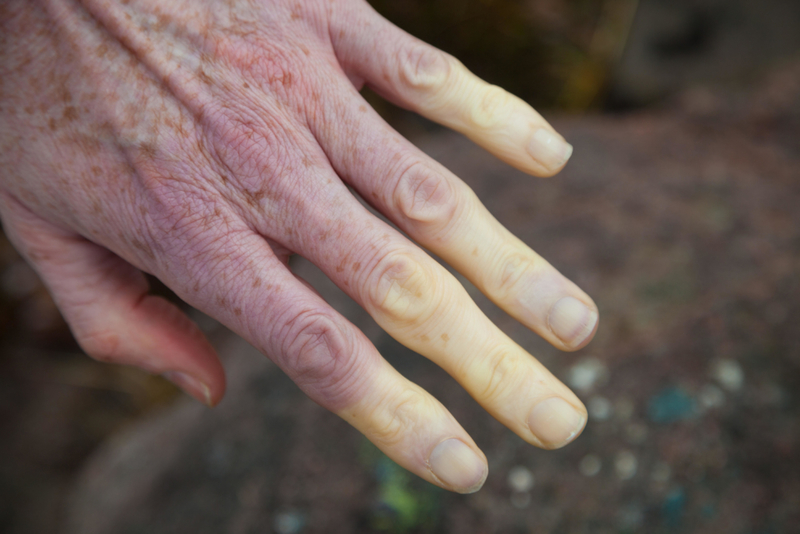
It's typically the fingers that are affected, and sometimes the toes. In rare cases, the nose, ears, or lips are affected. While the cold is a big part of this happening, other causes include smoking, certain medications, and thyroid problems. About four percent of people suffer from some form of the disorder, and it's more prevalent in women.
Time to Stretch Yourself
Ehlers Danlos syndromes are a group of thirteen genetic connective-tissue disorders. One of the more common symptoms of these disorders is something called skin elasticity. Weak connective tissue creates skin that is incredibly stretchy or velvety soft. It's often quite thin and heals with abnormal scars.
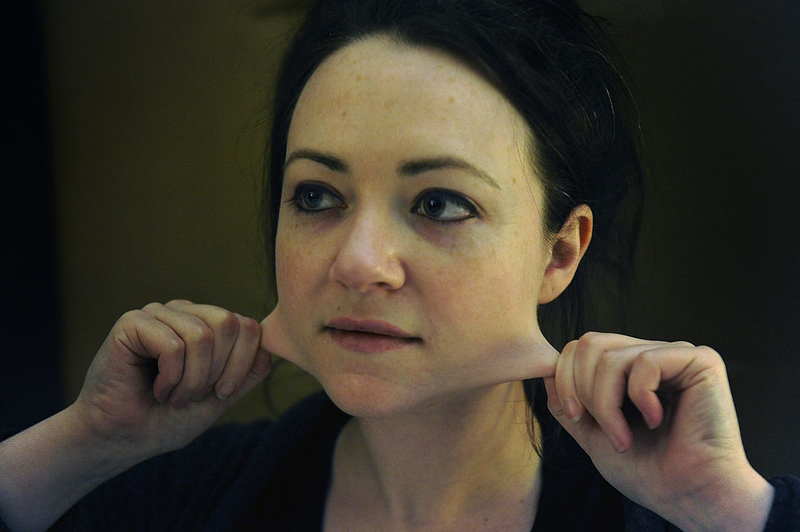
Some people with these disorders can stretch their skin out to absurd degrees, including doing things like putting their neck folds into their mouths or taking the tight skin of their arm and creating something that looks like a canvas. These disorders include plenty of other symptoms, and this one isn't all good, but it can still be a bit of fun.
The Speck in Your Eye
As our eyes develop, the remnants of a fetal membrane can persist inside the pupil, creating something called a persistent pupillary membrane, or PPM. It was originally present to provide blood to the lens for proper nutrients, but after birth, it serves little purpose.

A PPM causes when the membrane does not properly atrophy, but symptoms are rare, and even those with them lose them before reaching adulthood. Though some small effects may occur, minor treatments and rare surgeries will remove it entirely. In the meantime, it looks like a creature out of space.
That Dangly Thing, as Cardi B Calls It
We all have a uvula – that bit of flesh in the back of the mouth that dangles down. It's a helpful little bit for producing saliva, blocking nasal cavities while swallowing, and is also part of the gag reflex, which – while unpleasant – does a lot of good work for us.

Some people have a uvula that is split, called a bifid uvula. This sort of disorder is connected to middle ear infections (no fun) and food being able to enter the nasal cavity while swallowing (no fun). However, the population at large only presents this about two percent of the time.
Two Thumbs Way, Way Up
We've all delivered a crisp thumbs up to someone who did a good job, but people with triphalangeal thumb do it better than most. It's a congenital malformation where the thumb has three phalanges (bones) instead of two. The extra bone can vary in size from a pebble, all the way to being compared to other fingers' bones.
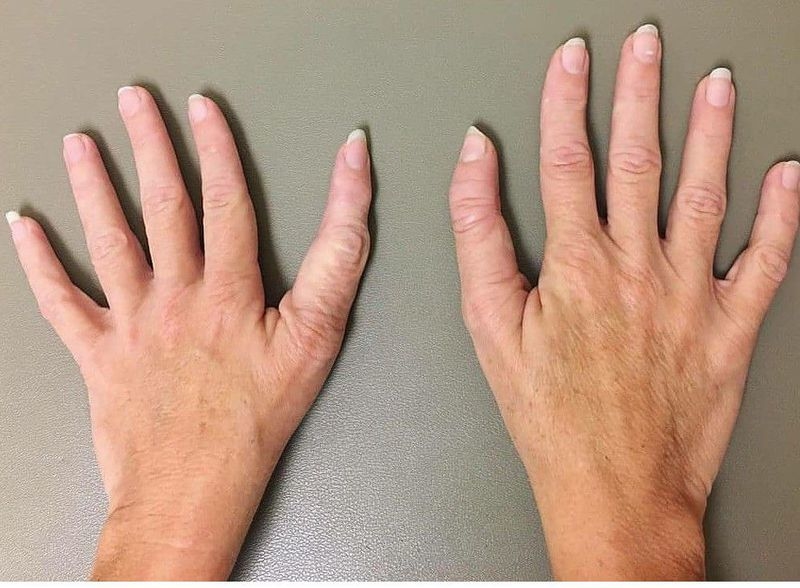
This seems like a great thing, but the affected thumbs often have mobility issues, and sometimes aren't even opposable. The condition seems to be primarily genetic, though the direct cause isn't yet known. It occurs in one out of every twenty-five thousand births.
Seeing Double
You've heard of the condition strabismus before, but you've probably heard of it by the name of being cross-eyed. Whether only sometimes or constantly, people who are cross-eyed have trouble focusing both eyes on one place. It can be the result of muscle dysfunction, farsightedness, problems in the brain, or even infections or trauma. It's also thought to have a genetic factor.

Strabismus occurs in about two percent of children, and there are various treatment types depending on the intensity, including simple glasses or surgery. Related is something called “Wall-eye” where the eyes look away from each other. Both disorders fall under the strabismus umbrella.
Hairless From Head to Toe
It's a sad fact of life that most people will have some hair loss. Even women will lose their mane volume over time. Alopecia Universalis, however, is that turned up to eleven. It's a complete lack of hair on the entire body – head, eyebrows, beard, chest, arms, legs, back, everywhere. However, people who have this disorder are otherwise completely healthy with no other symptoms.

The true cause isn't entirely known, but the current consensus is it's an autoimmune disorder where the body attacks hair follicles. Once again, genetics may also play a part, as twenty percent of people with alopecia Universalis have a family member who is also affected.
These Feet are Deadly Weapons
Genetic and environmental factors combine to create something called clubfoot, where one of the feet or both are rotated inward and downward on newborn children. The foot and leg may also be smaller than is normal, but various treatments are available to correct the issues. These include casting, manipulation of the Achilles tendon, braces, and surgery.

Without this help walking can be painful and difficult, though as long as it's treated with time, people who have developed clubfoot usually have no issues in life other than an interesting fact about themselves. It's more common, for some reason, in first children as well as males.
No Colors Here
Color blindness – or color vision deficiency – is the decreased ability to see color or differences in color. There are several versions, including total color blindness where the sufferer only sees in shades of gray. The most common cause of this disorder is a genetic problem in the development of the eyes' cone cells, which sense color.

Since the genes that carry these problems are on the X chromosome, men suffer from this disorder far more than women. The disorder makes people unable to have certain jobs, including pilots, train drivers, and many positions in the armed forces.
Sneezing in the Sun
A number of humans have something called the photic sneeze reflex – there's a reasonable chance you have it since it affects a quarter of the population. If you've ever sneezed when you step into bright sunlight, then you have it.

Scientists are, to put it mildly, baffled about why this happens. However, it's clear it's genetic – if one of your parents has it, you have a fifty percent chance of also having it. While sneezing isn't really dangerous, having a weakness for bright lights during driving or operations can pose some interesting problems.
Dry Earwax? Wet? Sticky? Your Genes Decide
Earwax is pretty much a human constant, but there are a bunch of different versions. Some of it is dry, flaky, and gray, while other people produce it wet, yellow, and sticky. It's all because of one gene, ABCC11.
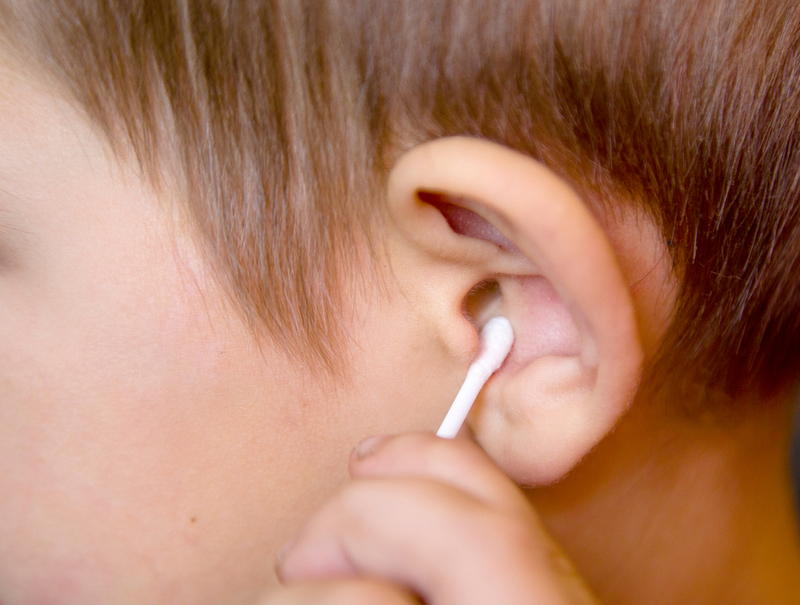
The version of the gene – called an allele – determines the production of this substance. That's about it as far as the reasoning goes, but the same gene is also responsible for body odor, primarily the smell of your armpits. If you have wet, sticky earwax, there's a bigger chance to have a stronger body odor.
Going to Bed Late or Getting up Early
We all have a part of the day when we feel most alert, awake, and productive. You might be a night owl or a morning lark, or you might be some time in between, but once again this is all thanks to our genes.

Our circadian rhythm runs on a twenty-four-hour schedule, but genes can slow it down or speed it up slightly. Those who have a fast rhythm will feel full of energy in the morning but crash at night, while those with a slow rhythm will be slow in the morning and have lots of energy at night.